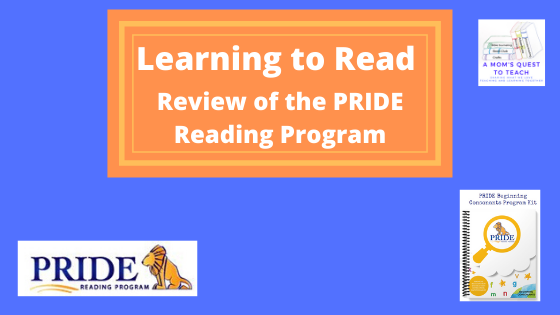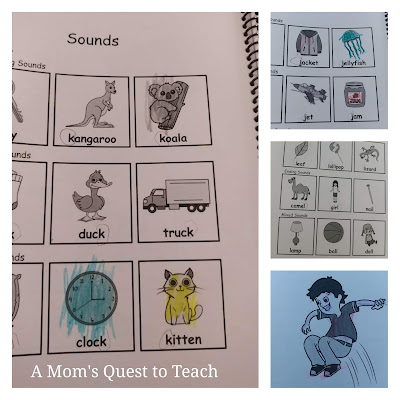Disclaimer: I received a FREE copy of this product through the HOMESCHOOL REVIEW CREW in exchange for my honest review. I was not required to write a positive review nor was I compensated in any other way.
Our first grader loves to read. So, whenever we get the chance to review books, we jump at the opportunity. I was very excited to receive The Boxcar Children Early Reader Set because I had no experience with the Boxcar Children series prior to reading these four books. I am always on the lookout for new books to introduce to our children. So, we appreciate finding ones that are appropriate and free of questionable content. These books, written by Gertrude Chandler Warner, published by Albert Whitman & Company were a fantastic addition to our homeschooling day.
General Information About the Books
The Boxcar Children Early Reader Set contains the first four books in Gertrude Chandler Warner's Boxcar Children series adapted for early readers. The Boxcar Children series tells the story of Henry, Jessie, Violet, and Benny who were orphaned and in the first book (published in 1924 but re-issued in 1964 by Albert Whitman & Company) find themselves living in a boxcar in the forest.
The books included in this set are:
The Boxcar Children
Surprise Island
The Yellow House Mystery
Mystery Ranch
In the first book we meet the four children and learn that they were hiding from their grandfather because they thought he was mean and didn't want to live with him after the death of their parents. Surprise Island starts with the beginning of summer – the perfect time to go on an adventure! The entire book details the children's experiences living on the island without their grandfather. They meet up with Joe who joins them on their adventures and teaches the children many new things including teaching Violet to play the violin. The children learn of Bill who lived in the yellow house in the third book. They explore the yellow house and discover a clue to the mystery of what happens to Bill the previous resident. And finally in Mystery Ranch, the children visit their great aunt's ranch and try to cheer her up. All the while, they explore a mystery of rocks and a secret campsite.
These four books are part of the Time to Read™ series which is an early reader program. Early reader programs are created to provide reading success to children regardless of their age or grade. This particular series has three levels which helps parents pick the books that fit the reading abilities of their children.
The three levels are:
- Beginning to Read
- Reading with Help
- Reading Independently
The Boxcar Children Early Reader Set is Level 2: Reading with Help. I think this is a perfect placement as our four-year-old could read some of the story with my help and our first grader was able to read them by himself (he has been reading independently for a while now). So, I think they are perfect for a five-year-old!
How Did We Use The Boxcar Children Early Reader Set in our Homeschool?
 I gave all four books to our first grader to read on his own when they first arrived. As he loves reading, I knew that he would read them at his leisure. He actually read them all by himself before we were able to read them together.
I gave all four books to our first grader to read on his own when they first arrived. As he loves reading, I knew that he would read them at his leisure. He actually read them all by himself before we were able to read them together.I chose to read them during the review period as bedtime read-alouds. The first night I read one, our first grader wanted me to read another and then another. (I only read two that night.) He wasn't trying to stall bedtime. He really enjoyed the stories.
Our four-year-old then decided one afternoon she wanted to read Mystery Ranch to me. So we sat down together and she went through the first several pages with a little bit of help with the names of the characters and words like exciting and passenger. But unlike some other learning-to-read books, she did not seem to be discouraged by the few words she did not know. She was also able to follow the story as she was reading the book. And she was very excited to see what the rocks were that were found on Aunt Jane's ranch.
What Did We Think?
I really liked the books. I found them easy to read aloud to our two young children. They are just the right length. The illustrations are bright and colorful. And another great bonus is that the text is large and easy to read – no crazy font or colors. I appreciate books that are easy on the eyes as a parent.
The fact that the children wanted to live in a boxcar is really cool. So many children dream of living on their own in a treehouse, tent, or cave. So the idea is likely to connect with children who love adventure. I also think the way they became orphans and living on their own was handled in a very good manner. Nothing super sad or scary.
Our son's favorite book was Surprise Island. He really liked the museum that the children created while collecting items (like shells) as they were walking up and down the beach. In the story, Joe helps the children identify the objects with books he brings over. (I can see our children creating their own museum much like the Alden children did in the book.)
When I asked our son to tell me what he liked about The Yellow House Mystery, he grabbed the book and sat there laughing as he re-read when Joe's canoe tipped over. He then read some of it out loud to us, which caused his sister to want to see the book, too. He liked the fact that Bill was able to make a new start at the end of the book. A good lesson to be learned about the ability to start over.
After reading Mystery Ranch to our four-year-old, I asked her what she liked about the book. She proceeded to flip through the book and explain what she likes about each part or illustration. She concluded this with: "It's the best book that I love."
Personally, I can't wait to check out more in the series including the ones that aren't adapted for early readers. I think they will be a good fit for our homeschooling journey. As our teen fondly remembered The Boxcar Children series from his younger years, we are sure his siblings will continue to find them as fascinating as he said he did.
Do You Want To Learn More?
Other members of the Homeschool Review Crew read The Boxcar Children Early Reader Set, too! Please be sure to check out their reviews to see how they used the books in their homeschool. And why not take a look at all the other great books from Albert Whitman & Company.





























